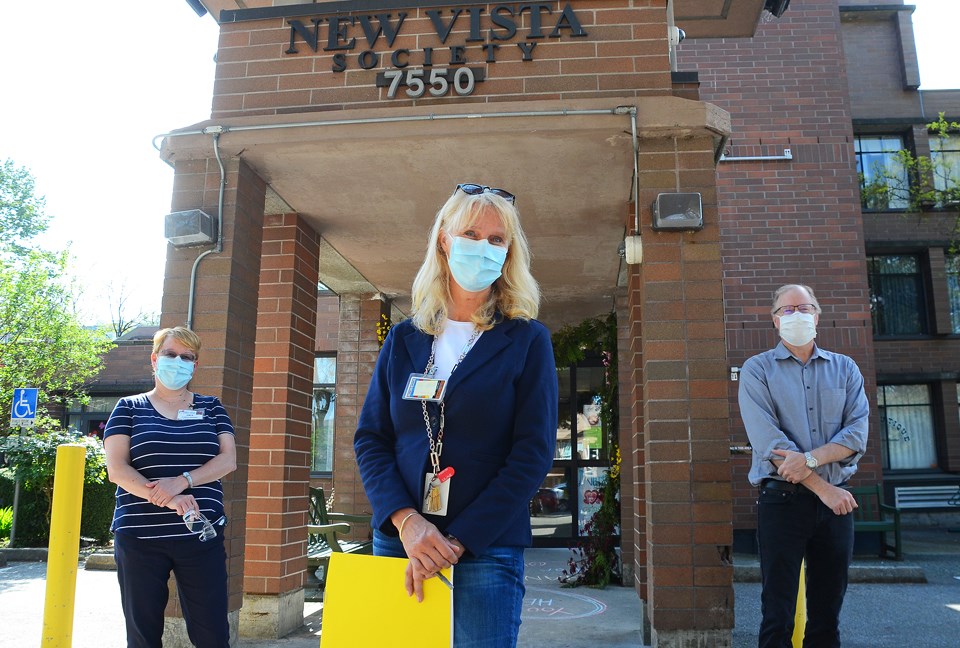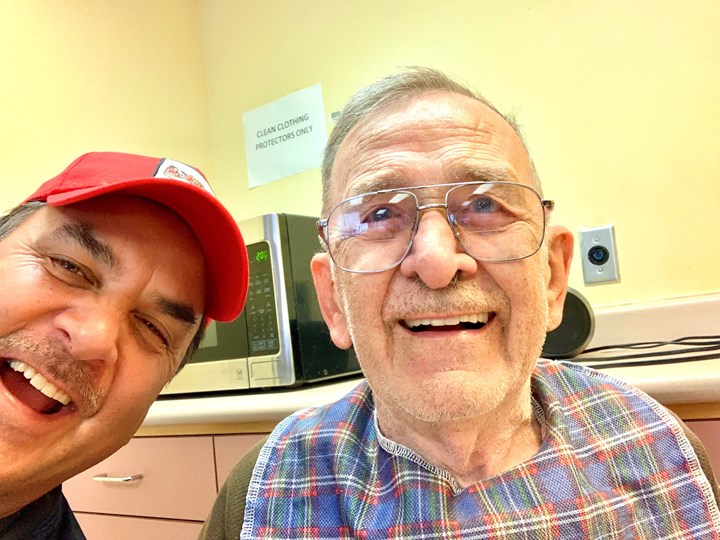The calls are growing to start allowing more family members to visit loved ones in assisted living and long-term care homes.
In March, provincial health officer Dr. Bonnie Henry restricted these homes for seniors to essential visitors only. That’s been in place ever since, although some visits have been allowed for family members classified as essential to support the mental health of the resident.
On Thursday, the organization representing the majority of B.C.’s long-term care and assisted living operators appealed to Henry to permit family members to visit with their loved ones in care homes, provided measures are taken to mitigate risk.
Few people qualify for the essential designation and now it’s been months for so many families to visit these residents.
The Preissl family is one of them.
It’s been three long months since any of the Preissl family has visited Walter, age 90, in Burnaby’s New Vista Society care home, which had a COVID-19 outbreak. The home is now clear of all cases.
Son John talks to Walter, who has dementia, on Facetime twice a week, which really helps,” he said.
“As long as the proper strict safety protocols are abided by, I think it is critical for folks like my mom and dad to visit,” he said. “Of course, I still think only those close should be able to visit. We don’t want any more outbreaks in care homes in the beginning of phase 2.”
John’s parents, Walter and Marie, have been married for 65 years this August, so three months apart has been hard.
“It has been extremely difficult for her not being able to visit dad every day,” John said. “They have not been apart for more than a week since they were married.”
What has helped has been the “angels” New Vista, John said, and the care they give Walter.
Marie Preissl agrees, saying the home has done a “wonderful job.”
But the outbreak protocols were hard on residents like Walter.
She said that after the outbreak happened, residents were confined to their rooms, which meant that Walter was unable to get around in his wheelchair. He uses his feet and moves pretty fast around the home.

“I was worried about him being in his room all the time and not being active,” Marie said. “But apparently he’s back to scooting around, which is good to hear.”
Marie said she should be looking forward to that 65th wedding anniversary, instead of not being able to spend time with her husband.
“We’ve been together for so long,” she said. “That’s why I feel lonely sometimes and I’m sure he’s puzzled why I haven’t visited him.”
Marie does support allowing loved ones to visit again, but is torn about her visiting because she isn’t sure physical distancing will be compatible with Walter’s dementia.
“I don’t know if my Walter would understand me sitting so far away on the other side of the table,” Marie said.
Outbreaks in care homes highlight the fact that seniors are the most vulnerable to serious illness from COVID-19, Henry said Thursday. “If the virus gets into those [long-term-care] settings, it can spread undetected very rapidly, and that has led to so much of the tragedy that we have seen with deaths from this virus.”
Allowing more people into long-term care homes increases the risk that somebody will inadvertently introduce the virus into a care setting, she said.
“It is the most challenging question that we have, because it’s a balancing of quality of life all around and it’s not a simple question.”
Health Minister Adrian Dix said the desire to restart visits to seniors home is one reason why it’s so important for everyone to maintain physical distancing, hand washing and other precautions to stop the spread of the virus.
“When we act to follow the rules, we’re making all of that more possible,” Dix said. “When we don’t, we are making it less possible.”
- With files from the Victoria Times Colonist



